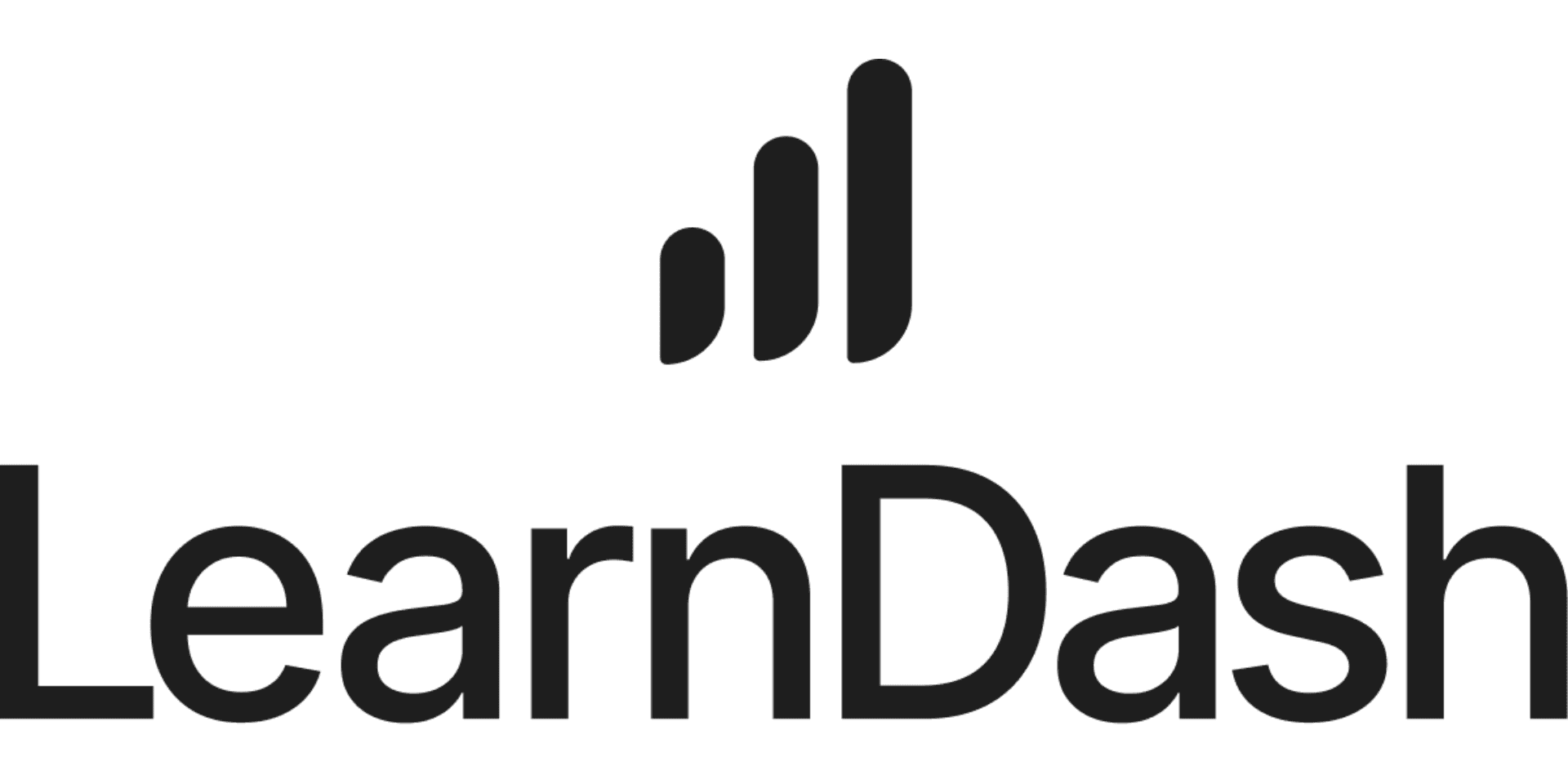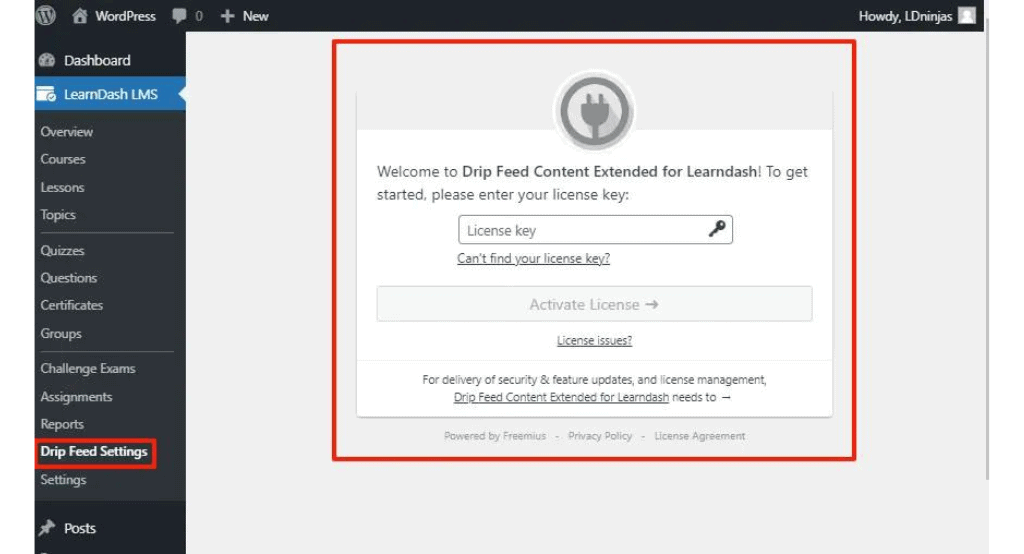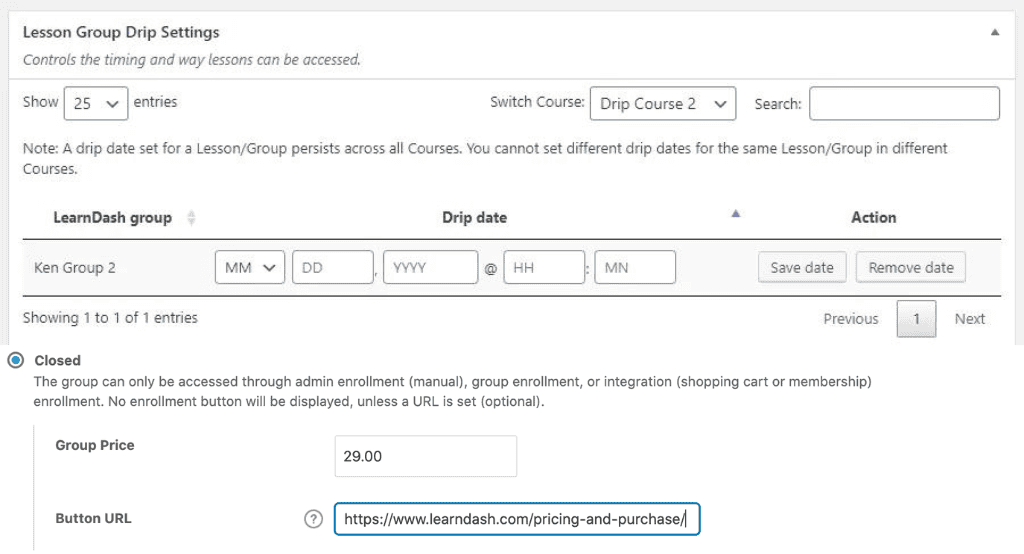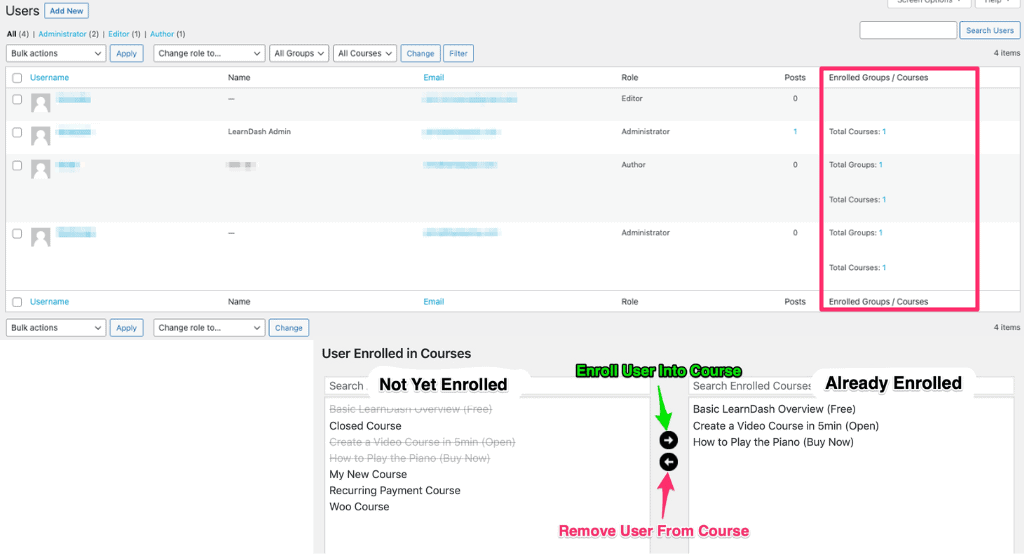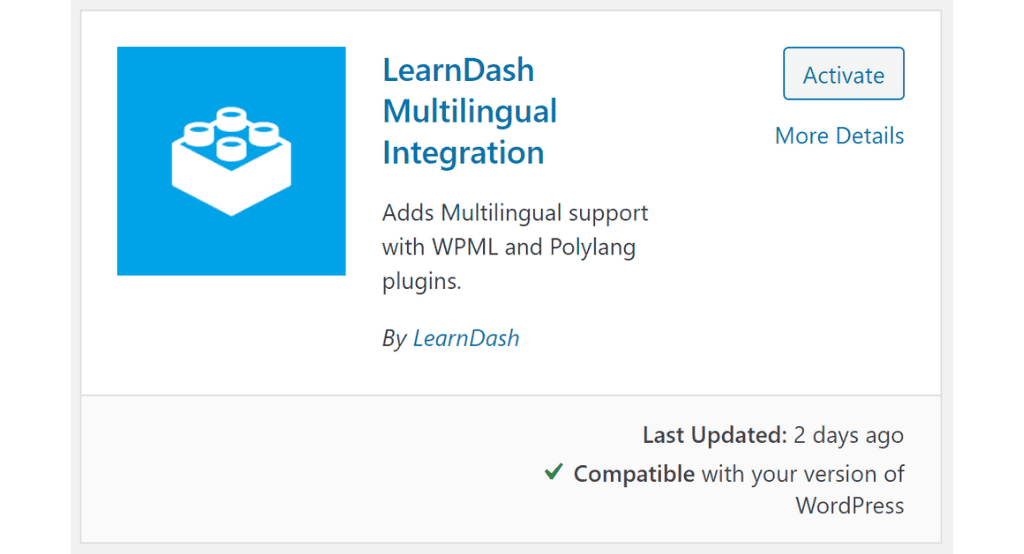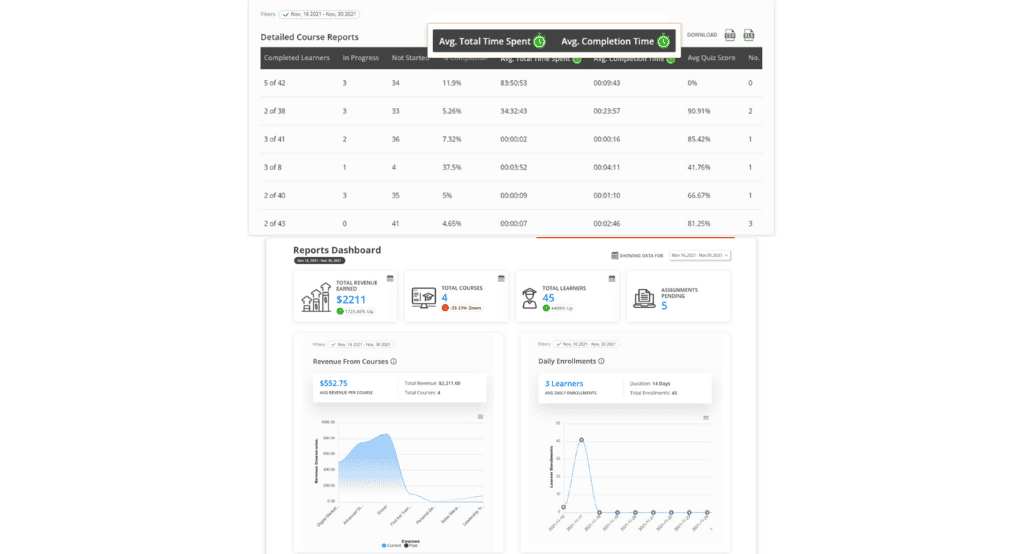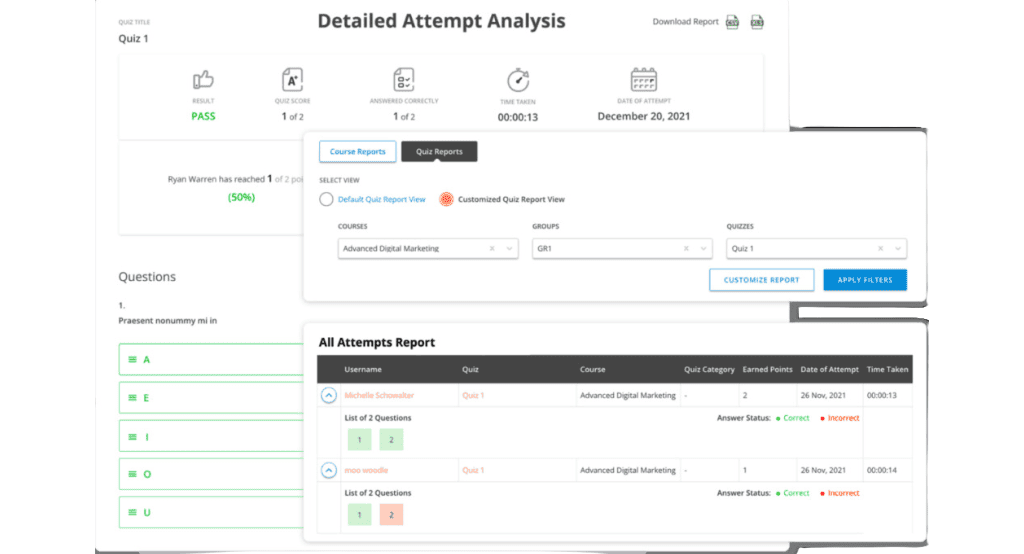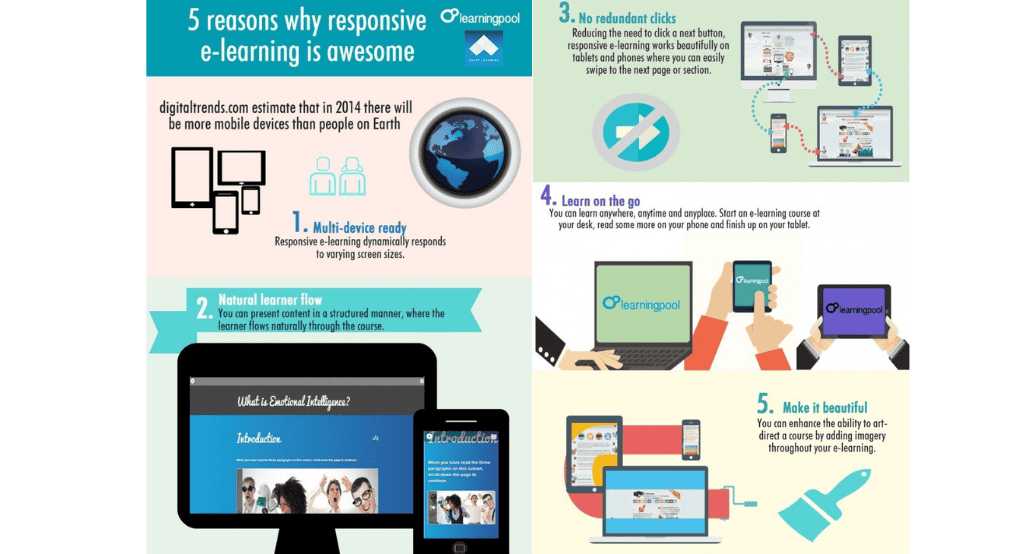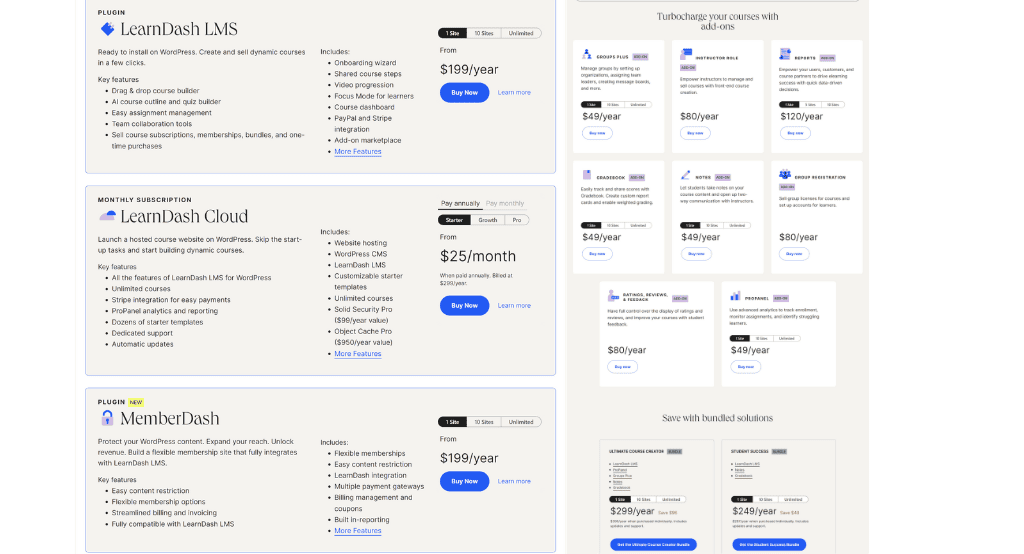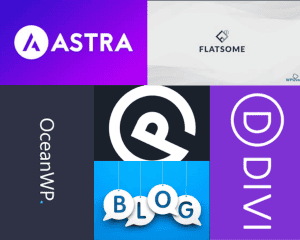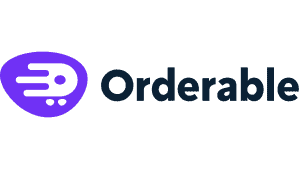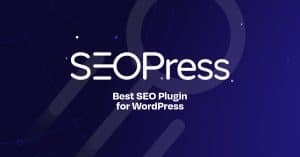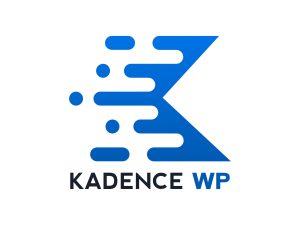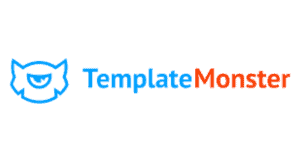Introduction
LearnDash is a powerful Learning Management System (LMS) plugin for WordPress, designed to create and manage online courses. Known for its robust features and flexibility, LearnDash caters to educational institutions, businesses, and individual educators looking to offer structured, engaging, and interactive learning experiences. In this review, we will delve into the key features and functionality of LearnDash, evaluating its performance, pricing, and overall value.
 Learning Management for WordPress | LearnDash
Learning Management for WordPress | LearnDash
- Comprehensive Feature Set
- Flexibility and Customization
- Seamless WordPress Integration
- Strong Community and Support
- Advanced Analytics and Reporting
- Mobile Responsiveness
- E-Commerce Capabilities
- Learning Curve
- Cost
- Limited Native Video Hosting
- Dependency on WordPress
- No Free Plan
- Performance on Shared Hosting
Core Features
Course Creation and Management
One of the standout features of LearnDash is its comprehensive course creation and management capabilities. Here’s a closer look:
1. Intuitive Course Builder LearnDash offers an intuitive drag-and-drop course builder that simplifies the process of creating courses. This user-friendly interface allows educators to organize content into lessons, topics, and categories with ease. The builder supports multimedia content, enabling the inclusion of videos, audio, and images to enhance the learning experience.
2. Flexible Course Structures Educators can design courses with various structures, whether linear or non-linear. This flexibility caters to different teaching methodologies, allowing for the creation of sequential learning paths or more open-ended, exploration-based courses.
3. Lesson and Topic Management Each course can be broken down into manageable lessons and topics. LearnDash provides tools for scheduling, setting prerequisites, and locking content until previous sections are completed, ensuring that learners follow the intended progression.
4. Content Drip-Feeding LearnDash includes a powerful drip-feed content feature, enabling educators to release content on a schedule. This keeps learners engaged over time and prevents them from rushing through the material. Content can be scheduled based on enrollment date or a specific date, offering flexibility in course delivery.
5. Assignment and Grading The platform supports the creation of assignments for learners to complete. Educators can grade these assignments manually or automatically, depending on the nature of the task. This feature helps track learner progress and provides valuable feedback to students.
6. Certificate and Badge Awards To motivate learners, LearnDash allows the issuance of certificates and badges upon course or module completion. These awards can be customized to reflect the institution’s branding and provide learners with a sense of accomplishment.
Quizzes and Assessments
LearnDash offers robust tools for quizzes and assessments, ensuring that educators can effectively evaluate learner comprehension and progress. Here’s an in-depth look at these features:
1. Diverse Question Types LearnDash supports a wide range of question types, including multiple choice, true/false, fill-in-the-blank, matching, short answer, and essay questions. This diversity allows educators to create comprehensive and varied assessments that cater to different learning styles.
2. Question Bank The question bank feature allows educators to create a repository of questions that can be reused across multiple quizzes and courses. This makes it easy to build and manage extensive assessments without redundant efforts.
3. Advanced Quiz Settings LearnDash provides advanced settings for quizzes, such as time limits, question randomization, and passing grades. Educators can also set up quiz prerequisites, ensuring that learners complete certain activities before attempting the quiz.
4. Automated and Manual Grading For objective questions like multiple choice and true/false, LearnDash offers automated grading, providing instant feedback to learners. For subjective questions, such as essays and short answers, educators can manually grade and offer detailed feedback.
5. Quiz Progression and Attempts Educators can configure quizzes to allow multiple attempts, track progress, and even offer hints or explanations for incorrect answers. This feature encourages learners to improve through practice and understanding.
6. Customizable Results Pages After completing a quiz, learners can be directed to a customizable results page that provides detailed feedback, including correct answers, explanations, and overall performance. This helps learners understand their strengths and areas for improvement.
7. Question Import/Export LearnDash supports the import and export of quiz questions, making it easy to share and collaborate with other educators or migrate content from other systems.
8. Leaderboards and Competitions To foster a competitive spirit, LearnDash includes leaderboards that display top performers. This feature can be particularly engaging for learners, adding an element of gamification to the learning experience.
Drip-Feed Content
LearnDash’s drip-feed content feature is designed to enhance learner engagement and retention by releasing course materials on a scheduled basis. Here’s an in-depth look at this functionality:
1. Scheduled Content Release Drip-feed content allows educators to schedule the release of course materials over time. This can be based on the learner's enrollment date or set to specific calendar dates. This approach ensures that learners progress through the course at a controlled pace, promoting better understanding and retention of the material.
2. Flexible Scheduling Options Educators can choose from various scheduling options, such as releasing content weekly, monthly, or after a set number of days. This flexibility accommodates different course structures and teaching styles, making it suitable for both short-term and long-term courses.
3. Email Notifications To keep learners informed and engaged, LearnDash can automatically send email notifications when new content is available. These notifications can be customized to include specific instructions, encouragement, or additional resources, ensuring that learners stay on track.
4. Content Locking LearnDash offers content locking features that prevent learners from accessing future lessons until they have completed previous ones. This ensures a structured learning path and prevents learners from skipping ahead without mastering earlier material.
5. Progression Control Instructors can set prerequisites for lessons and quizzes, requiring learners to achieve certain scores or complete specific tasks before accessing new content. This helps reinforce learning objectives and ensures that learners have a solid understanding of the material before moving forward.
6. Customization and Personalization Drip-feed content can be tailored to individual learners or groups, allowing for personalized learning experiences. This customization can be based on performance, learning pace, or specific learning goals, providing a more targeted and effective educational experience.
7. Integration with Third-Party Tools LearnDash’s drip-feed functionality integrates seamlessly with various third-party tools and plugins, enhancing its capabilities. For example, integration with email marketing tools allows for more sophisticated communication strategies, while integration with eCommerce platforms can automate the release of purchased content.
User Management and Engagement
LearnDash offers a range of tools for managing learners and keeping them engaged throughout their courses. Here’s an overview of its capabilities in this area:
1. User Enrollment and Groups LearnDash provides flexible user enrollment options. Educators can manually enroll learners, allow self-enrollment, or integrate with eCommerce platforms for paid courses. The platform also supports the creation of user groups, enabling administrators to manage learners in cohorts or classes efficiently.
2. Group Leaders Group leaders can be assigned to oversee specific groups of learners. These leaders have access to group-specific reports and can communicate directly with their members, making it easier to manage larger classes and provide personalized support.
3. User Profiles Each learner has a personalized profile that tracks their progress, course completions, quiz results, and certificates earned. This profile gives both educators and learners a clear view of achievements and areas needing improvement.
4. Forums and Discussions To foster community and interaction, LearnDash integrates with popular forum plugins like bbPress. This allows learners to participate in discussions, ask questions, and engage with peers and instructors, creating a collaborative learning environment.
5. Notifications and Reminders Automated notifications and reminders help keep learners on track. These can be set up to notify users of upcoming lessons, deadlines, or new content availability. Customizable email templates ensure that communication is consistent and aligned with the course’s branding.
6. Gamification LearnDash incorporates gamification elements such as badges, certificates, and points to motivate learners. These rewards provide immediate feedback and recognition for achievements, making the learning process more engaging and fun.
7. Progress Tracking Detailed progress tracking allows educators to monitor learner engagement and performance. This includes tracking course completion rates, quiz scores, and time spent on each lesson. These insights help identify learners who may need additional support.
8. Social Learning Integration with social learning tools enables learners to share their progress and achievements on social media platforms. This not only boosts learner motivation but also promotes the courses to a wider audience.
9. Engagement Triggers LearnDash’s engagement triggers enable automated actions based on learner behavior. For example, completing a lesson can trigger an email, awarding a certificate, or unlocking new content. This automation helps maintain engagement without requiring constant manual intervention.
User Interface and Ease of Use
LearnDash is designed with a user-friendly interface that makes course creation and management straightforward for educators and engaging for learners. Here’s an in-depth look at the user interface and ease of use:
1. Intuitive Dashboard The LearnDash dashboard is clean and easy to navigate, providing educators with quick access to all the essential tools and settings. The interface is organized logically, making it easy to manage courses, quizzes, and learners without a steep learning curve.
2. Drag-and-Drop Course Builder The drag-and-drop course builder is one of LearnDash’s standout features. It allows educators to create and organize course content effortlessly. Adding lessons, topics, and quizzes is straightforward, with visual cues and guides to help structure courses effectively.
3. Front-End Course Display Courses created with LearnDash are displayed attractively on the front end of the WordPress site. The design is responsive, ensuring a seamless experience on both desktop and mobile devices. Learners can easily navigate through courses, track their progress, and access content without any hassle.
4. Customization Options LearnDash offers extensive customization options to match the look and feel of the course to the brand’s aesthetics. Educators can customize colors, fonts, and layouts using built-in options or by adding custom CSS. This flexibility ensures that the course platform aligns with the organization’s branding.
5. Responsive Design The platform is fully responsive, ensuring that both the back-end management tools and front-end learning experience work flawlessly on all devices. This is crucial for modern learners who access content from various devices, including smartphones and tablets.
6. Easy Content Upload Uploading and managing course content is simple with LearnDash. Educators can easily add multimedia content, such as videos, audio files, and PDFs, directly to their lessons. The media library integration makes it easy to manage and reuse content across multiple courses.
7. Learner-Friendly Interface For learners, the interface is designed to be intuitive and engaging. Course progress is clearly displayed, and navigation is straightforward. Features like progress bars, completion checkmarks, and easy access to quizzes and assignments enhance the learning experience.
8. Admin and Instructor Roles LearnDash allows for the creation of different user roles with specific permissions. Administrators can manage the entire platform, while instructors can focus on creating and managing their courses. This role-based access ensures that users have the necessary tools without overwhelming them with unnecessary options.
9. Seamless WordPress Integration Being a WordPress plugin, LearnDash integrates seamlessly with the WordPress ecosystem. This means that educators familiar with WordPress will find LearnDash easy to adopt. It also allows for integration with other WordPress plugins, enhancing functionality and customization options.
Integration with Other Tools and Platforms
LearnDash is designed to seamlessly integrate with a wide range of tools and platforms, enhancing its functionality and flexibility. Here’s an overview of its integration capabilities:
1. eCommerce Integration LearnDash integrates with popular eCommerce platforms like WooCommerce and Easy Digital Downloads, enabling educators to sell courses directly from their WordPress sites. These integrations support various payment gateways, subscription models, and discount codes, making it easy to monetize online courses.
2. Membership Plugins Integration with membership plugins such as MemberPress and Restrict Content Pro allows educators to create membership sites where access to courses is restricted based on membership levels. This is ideal for offering premium content or exclusive courses to members.
3. Email Marketing Tools LearnDash integrates with major email marketing tools like Mailchimp, ActiveCampaign, and ConvertKit. This allows educators to automate email campaigns, send course updates, and nurture relationships with learners through targeted email marketing.
4. Gamification and Social Learning To enhance learner engagement, LearnDash integrates with gamification plugins like BadgeOS and GamiPress. These plugins allow educators to implement points, badges, and leaderboards. Additionally, integration with social learning tools like BuddyPress enables the creation of social networks and communities within the course platform.
5. CRM Integration LearnDash can be integrated with Customer Relationship Management (CRM) systems like HubSpot and Salesforce through third-party connectors. This integration helps educators manage learner relationships, track interactions, and analyze data to improve course offerings.
6. Webinars and Live Classes For those offering live classes or webinars, LearnDash integrates with platforms like Zoom and WebinarJam. These integrations make it easy to schedule, manage, and conduct live sessions, enhancing the interactive learning experience.
7. Analytics and Reporting LearnDash offers integration with advanced analytics tools like Google Analytics and Tin Can API (Experience API). These integrations provide deeper insights into learner behavior, course performance, and engagement metrics, enabling data-driven decisions to improve courses.
8. Learning Tools Interoperability (LTI) LTI integration allows LearnDash to connect with other LMS platforms and learning tools, making it suitable for institutions that use multiple systems. This interoperability ensures that LearnDash can be part of a broader educational ecosystem.
9. Custom Integrations via Zapier Through Zapier, LearnDash can connect with over 2,000 apps, enabling custom workflows and automation. This flexibility allows educators to create tailored integrations that meet their specific needs, whether it’s synchronizing data with other systems or automating repetitive tasks.
10. SCORM and xAPI Support LearnDash supports SCORM and xAPI (Tin Can API) standards, making it compatible with a wide range of e-learning content created in other authoring tools. This ensures that educators can import and use content from various sources seamlessly.
Reporting and Analytics
LearnDash provides powerful reporting and analytics tools that help educators track learner progress, measure course effectiveness, and make data-driven decisions to enhance the learning experience. Here’s an in-depth look at these capabilities:
1. Comprehensive Course Reports LearnDash offers detailed course reports that provide insights into learner activity and progress. These reports include information on enrollment numbers, course completion rates, time spent on courses, and quiz performance, helping educators evaluate the effectiveness of their courses.
2. Quiz Analytics The platform includes robust quiz analytics, allowing educators to see how learners are performing on individual quizzes. Metrics such as average scores, pass/fail rates, and question-level statistics help identify areas where learners may be struggling and need additional support.
3. Learner Progress Tracking Educators can track individual learner progress through detailed reports that show which lessons and topics have been completed, quiz scores, and assignment submissions. This granular tracking helps identify learners who may need extra assistance and those who are excelling.
4. Engagement Reports LearnDash provides engagement reports that highlight how actively learners are participating in the course. These reports track activities such as logins, forum participation, and interaction with course materials, offering a comprehensive view of learner engagement.
5. Customizable Reporting The reporting tools in LearnDash are highly customizable, allowing educators to generate specific reports based on their unique needs. Filters and sorting options enable users to drill down into the data and extract meaningful insights tailored to their objectives.
6. Exportable Reports All reports can be exported in various formats, including CSV and Excel. This functionality makes it easy to share data with stakeholders, analyze it in other tools, or keep historical records for future reference.
7. Third-Party Reporting Integrations For more advanced reporting needs, LearnDash integrates with third-party analytics tools like Google Analytics and Tin Can API (xAPI). These integrations allow for deeper data analysis and the ability to track user interactions across different platforms and learning activities.
8. Visual Dashboards LearnDash features visual dashboards that provide at-a-glance views of key metrics and performance indicators. These dashboards are designed to be intuitive, making it easy for educators to quickly assess the health of their courses and identify trends.
9. Learner Feedback and Surveys The platform supports the creation of surveys and feedback forms, enabling educators to gather direct input from learners. This feedback can be used to improve course content, structure, and delivery methods, ensuring that the courses meet learners’ needs and expectations.
10. Real-Time Data LearnDash provides real-time data on learner activities and course performance. This real-time insight allows educators to make timely interventions, adjust course materials as needed, and respond quickly to learner needs.
Mobile Responsiveness
In today’s digital learning environment, mobile responsiveness is crucial to ensure that learners can access course content anytime, anywhere. LearnDash excels in providing a seamless experience across devices. Here’s a closer look at its mobile responsiveness:
1. Fully Responsive Design LearnDash courses are designed to be fully responsive, meaning they automatically adjust to fit any screen size, whether it’s a desktop, tablet, or smartphone. This ensures that learners have a consistent and user-friendly experience regardless of the device they use.
2. Mobile-Friendly Course Navigation The platform’s user interface is optimized for mobile devices, with intuitive navigation that makes it easy for learners to move through courses. Buttons, menus, and other interactive elements are designed to be easily tappable, enhancing the mobile user experience.
3. Offline Access LearnDash supports offline access to course materials through various third-party apps and plugins. This feature is particularly useful for learners who may not always have a reliable internet connection but still need to access their course content.
4. Mobile-Optimized Media Multimedia content, such as videos and audio files, is optimized for mobile viewing. LearnDash ensures that videos play smoothly on mobile devices and that all media elements are appropriately scaled for different screen sizes.
5. Interactive Elements on Mobile All interactive elements, including quizzes, assignments, and discussion forums, are fully functional on mobile devices. Learners can complete quizzes, submit assignments, and participate in forums just as they would on a desktop.
6. Mobile App Integration LearnDash can be integrated with mobile apps via third-party solutions, providing an even more streamlined mobile learning experience. These apps offer dedicated features for offline learning, push notifications, and enhanced performance on mobile devices.
7. Seamless Transition Between Devices LearnDash ensures a seamless transition between devices, allowing learners to start a course on their desktop and continue on their mobile device without any loss of progress. This flexibility supports modern learners who switch between devices throughout their day.
8. Touch-Friendly Interactions The platform’s touch-friendly design makes it easy for learners to interact with course elements on touch-screen devices. Swiping, tapping, and other touch gestures are fully supported, making mobile learning intuitive and engaging.
9. Mobile Notifications Educators can leverage mobile notifications to keep learners informed about new content, deadlines, and other important updates. These notifications help maintain learner engagement and ensure they stay on track with their studies.
10. Consistent Performance LearnDash is optimized to ensure consistent performance across all devices. Mobile learners experience fast load times, minimal lag, and smooth navigation, making their learning experience as effective as possible.
Performance
Speed and Reliability
Performance is a critical aspect of any Learning Management System (LMS), and LearnDash is designed to deliver a fast and reliable user experience. Here’s an overview of its performance attributes:
1. Fast Load Times LearnDash is optimized for speed, ensuring that course pages load quickly. Fast load times are crucial for maintaining learner engagement and preventing frustration. The platform achieves this through efficient coding practices and leveraging WordPress’s inherent performance optimizations.
2. Caching Support LearnDash integrates seamlessly with popular WordPress caching plugins like WP Rocket and W3 Total Cache. These plugins help further improve load times by storing static versions of course pages, reducing the server load and speeding up content delivery.
3. Scalability LearnDash is built to handle a large number of users and courses, making it suitable for both small institutions and large organizations. Its scalability ensures that as your user base grows, the platform can accommodate increased traffic and data without compromising performance.
4. Minimal Downtime The platform is designed for reliability, with minimal downtime. Regular updates and maintenance by the LearnDash team ensure that the system remains stable and functional, providing a consistent learning experience for users.
5. Efficient Resource Usage LearnDash is optimized to use server resources efficiently. This means that even on shared hosting environments, the platform performs well without overloading the server. For larger installations, dedicated hosting solutions can further enhance performance.
6. Load Testing and Optimization LearnDash undergoes regular load testing to identify and address potential performance bottlenecks. These optimizations help ensure that the platform can handle high user volumes and complex courses without degrading performance.
7. Content Delivery Networks (CDNs) Integrating LearnDash with CDNs like Cloudflare can significantly improve performance by distributing content across multiple servers worldwide. This reduces latency and ensures faster access to course materials for learners regardless of their geographical location.
8. Reliable Hosting Recommendations LearnDash provides recommendations for reliable hosting providers known for their performance and compatibility with WordPress. Using these recommended hosts can help ensure optimal performance for your LearnDash installation.
9. Regular Updates The LearnDash team regularly releases updates that include performance enhancements and new features. These updates help keep the platform running smoothly and take advantage of the latest technological advancements.
10. User Feedback and Support LearnDash has an active community and support system where users can report performance issues and get assistance. The feedback from this community helps the LearnDash team continually improve the platform’s performance.
Pricing and Plans
LearnDash offers a variety of pricing plans and options to cater to different needs, whether you are an individual educator, a business, or an educational institution. Here’s a detailed look at the pricing and what each plan includes:
LearnDash LMS Plugin
LearnDash LMS is the core product designed to be installed on WordPress, enabling the creation and sale of dynamic courses.
Key Features:
- Drag & drop course builder
- AI course outline and quiz builder
- Easy assignment management
- Team collaboration tools
- Sell course subscriptions, memberships, bundles, and one-time purchases
- Onboarding wizard
- Shared course steps
- Video progression
- Focus Mode for learners
- Course dashboard
- PayPal and Stripe integration
- Add-on marketplace
Pricing Options:
- 1 Site: From $199/year
- 10 Sites: Higher pricing options available
- Unlimited Sites: Higher pricing options available
LearnDash Cloud
LearnDash Cloud offers a hosted course website on WordPress, eliminating the need for managing hosting and technical setup.
Key Features:
- All the features of LearnDash LMS for WordPress
- Unlimited courses
- Stripe integration for easy payments
- ProPanel analytics and reporting
- Dozens of starter templates
- Dedicated support
- Automatic updates
- Website hosting
- WordPress CMS
- Customizable starter templates
- Solid Security Pro ($99/year value)
- Object Cache Pro ($950/year value)
Pricing Options:
- Starter: From $25/month when paid annually (Billed at $299/year)
- Growth and Pro Plans: Higher pricing options available
MemberDash
MemberDash is an add-on to protect WordPress content and build a flexible membership site that integrates with LearnDash LMS.
Key Features:
- Easy content restriction
- Flexible membership options
- Streamlined billing and invoicing
- Fully compatible with LearnDash LMS
- Flexible memberships
- Multiple payment gateways
- Billing management and coupons
- Built-in reporting
Pricing Options:
- 1 Site: From $199/year
- 10 Sites: Higher pricing options available
- Unlimited Sites: Higher pricing options available
Add-Ons and Bundles
LearnDash offers several add-ons and bundles to extend the functionality of the core LMS and enhance the learning experience.
Add-Ons:
- Groups Plus: Manage groups, assign team leaders, create message boards, and more.
- Pricing: $49/year for 1 site, higher for multiple sites
- Instructor Role: Enable instructors to manage and sell courses with front-end course creation.
- Pricing: $80/year
- Reports: Provide advanced analytics and reporting capabilities.
- Pricing: $120/year for 1 site, higher for multiple sites
- Gradebook: Track and share scores, create custom report cards, and enable weighted grading.
- Pricing: $49/year for 1 site, higher for multiple sites
- Notes: Allow students to take notes and open two-way communication with instructors.
- Pricing: $49/year for 1 site, higher for multiple sites
- Group Registration: Sell group licenses and set up learner accounts.
- Pricing: $80/year
- Ratings, Reviews, and Feedback: Control the display of ratings and reviews, and improve courses with feedback.
- Pricing: $80/year
- ProPanel: Advanced analytics to track enrollment, monitor assignments, and identify struggling learners.
- Pricing: $49/year for 1 site, higher for multiple sites
Bundles:
- Ultimate Course Creator Bundle: Includes LearnDash LMS, ProPanel, Groups Plus, Notes, and Gradebook.
- Pricing: $299/year for 1 site (saves $96 compared to purchasing individually)
- Student Success Bundle: Includes LearnDash LMS, Notes, and Gradebook.
- Pricing: $249/year for 1 site (saves $48 compared to purchasing individually)
Additional Information:
- All pricing is in USD and does not include tax.
- Plans can be changed or canceled at any time.
Customer Support

Customer support is a critical component of any Learning Management System, and LearnDash offers a variety of support options to ensure that users can resolve issues quickly and effectively. Here’s an overview of LearnDash’s customer support offerings:
1. Dedicated Support Team LearnDash provides a dedicated support team available to assist users with any issues or questions they may have. Support is available through email and the support ticket system, ensuring that users receive timely and professional assistance.
2. Extensive Documentation The LearnDash website features extensive documentation that covers all aspects of the platform, from installation and setup to advanced features and troubleshooting. This documentation includes step-by-step guides, video tutorials, and FAQs, making it a valuable resource for both new and experienced users.
3. Onboarding and Training LearnDash offers an onboarding wizard that guides new users through the initial setup process, helping them get their courses up and running quickly. Additionally, there are training materials available, including webinars and video tutorials, to help users make the most of the platform’s features.
4. Community Support LearnDash has an active user community where educators, developers, and course creators can share tips, ask questions, and collaborate. This community support is facilitated through forums and social media groups, providing users with additional avenues to seek help and share experiences.
5. Knowledge Base The LearnDash knowledge base is a comprehensive resource that covers common issues, feature explanations, and best practices. Users can search for specific topics or browse through categories to find answers to their questions.
6. ProPanel Support For users subscribed to the LearnDash Cloud plan, ProPanel offers advanced analytics and reporting tools with dedicated support. This includes help with setting up and utilizing ProPanel features to track learner progress and course performance effectively.
7. Priority Support Higher-tier plans, such as the LearnDash Cloud Growth and Pro plans, offer priority support. This means faster response times and more personalized assistance, ensuring that critical issues are addressed promptly.
8. Regular Updates and Bug Fixes The LearnDash team regularly releases updates that include new features, performance improvements, and bug fixes. Users can rely on these updates to keep their LMS running smoothly and to benefit from the latest advancements in e-learning technology.
9. Third-Party Integrations Support LearnDash offers support for integrating with third-party tools and platforms. This includes documentation and guides on how to connect LearnDash with eCommerce platforms, email marketing tools, membership plugins, and more.
10. Feedback and Improvement The LearnDash team actively solicits feedback from users to improve the platform. Users can submit feature requests and report issues, contributing to the continuous enhancement of LearnDash based on real-world needs and experiences.
Use Cases
LearnDash is a versatile Learning Management System that can be tailored to suit various types of educators and organizations. Here are some common use cases:
1. Educational Institutions
Schools and Universities LearnDash is ideal for schools and universities looking to offer online courses or supplement their traditional classroom instruction. It supports a wide range of educational content, from elementary school subjects to advanced university courses. Features like quizzes, assignments, and grading help educators manage student progress and performance effectively.
Corporate Training Businesses can use LearnDash to create and deliver employee training programs. The platform's flexibility allows companies to offer onboarding programs, compliance training, skills development courses, and more. The integration with eCommerce tools also makes it easy to sell training programs to other organizations.
Professional Development Organizations that offer professional development courses can use LearnDash to manage and deliver their content. This includes certification programs, continuing education units (CEUs), and other career advancement opportunities. The ability to issue certificates and badges helps recognize learner achievements.
2. Online Course Creators
Independent Educators LearnDash is a powerful tool for independent educators and trainers who want to monetize their expertise. They can create, market, and sell online courses directly from their WordPress websites. Features like drip-feed content, quizzes, and course bundles help keep learners engaged and encourage them to invest in multiple courses.
Coaches and Consultants Coaches and consultants can use LearnDash to develop comprehensive online programs that complement their one-on-one services. This might include workshops, training modules, and self-paced learning resources. The platform's flexibility allows them to offer both free and paid content to attract and retain clients.
3. Non-Profit Organizations
Educational Non-Profits Non-profit organizations focused on education can use LearnDash to expand their reach and impact. They can offer free or low-cost courses to underserved communities, track learner progress, and issue certificates of completion. The platform's integration with membership plugins helps manage volunteer training and donor education programs.
Community Learning Community centers and libraries can leverage LearnDash to offer educational resources to the public. This can include adult education courses, literacy programs, and technology training. The user-friendly interface makes it accessible to learners of all ages and backgrounds.
4. Membership Sites
Content Creators Bloggers, podcasters, and other content creators can use LearnDash to add an educational component to their membership sites. This allows them to offer exclusive courses to subscribers, increasing the value of their memberships and fostering a loyal community.
Fitness and Health Coaches Fitness trainers and health coaches can create online courses that complement their in-person services. This can include workout plans, nutritional guidance, and wellness programs. The ability to drip-feed content keeps clients engaged over time.
Examples of Successful Implementations
University of Michigan The University of Michigan uses LearnDash to deliver a range of online courses, from professional development to academic subjects. The platform's robust features help manage large numbers of students and complex course structures.
Yoast Academy Yoast, a well-known SEO company, uses LearnDash to power Yoast Academy. This platform offers a variety of courses on SEO and online marketing, demonstrating how businesses can use LearnDash to provide valuable educational content to their customers.
Infusionsoft Infusionsoft uses LearnDash to offer training and certification programs for its CRM software. These courses help users get the most out of their software, reducing support costs and increasing customer satisfaction.
Pros and Cons
Pros
1. Comprehensive Feature Set LearnDash offers a wide array of features, including a drag-and-drop course builder, quizzes, drip-feed content, and certificates. These features provide everything needed to create engaging and interactive online courses.
2. Flexibility and Customization The platform is highly customizable, allowing educators to tailor courses to their specific needs. From design customization to integrating with various plugins and third-party tools, LearnDash can be adapted to fit any teaching style or requirement.
3. Seamless WordPress Integration As a WordPress plugin, LearnDash integrates seamlessly with the WordPress ecosystem. This means educators can take advantage of the vast array of WordPress themes and plugins to enhance their e-learning platform.
4. Strong Community and Support LearnDash has an active community and a dedicated support team. Extensive documentation, forums, and direct support options ensure that users can find help when needed. Regular updates and new features demonstrate the team’s commitment to improving the platform.
5. Scalable Solution Whether you're an individual instructor or a large institution, LearnDash scales to meet your needs. It handles large numbers of users and courses efficiently, making it suitable for a wide range of educational applications.
6. Advanced Analytics and Reporting The platform provides robust analytics and reporting tools, helping educators track learner progress and course effectiveness. Integration with ProPanel offers advanced reporting capabilities for more detailed insights.
7. Mobile Responsiveness LearnDash is fully responsive, ensuring a seamless learning experience across all devices. This is crucial for modern learners who access content from various devices, including smartphones and tablets.
8. E-Commerce Capabilities LearnDash integrates with major eCommerce platforms like WooCommerce and Easy Digital Downloads, enabling educators to sell courses directly from their WordPress sites. This includes support for subscriptions, memberships, and one-time purchases.
Cons
1. Learning Curve Despite its user-friendly interface, LearnDash has a learning curve, especially for users new to WordPress or LMS platforms. The extensive features and customization options can be overwhelming initially.
2. Cost While LearnDash offers robust features, it comes at a cost. The pricing for add-ons and premium support can add up, making it a more significant investment compared to some other LMS options.
3. Limited Native Video Hosting LearnDash does not offer native video hosting, requiring users to host videos on external platforms like YouTube, Vimeo, or self-hosted solutions. This can add complexity and additional costs for video-heavy courses.
4. Dependency on WordPress As a WordPress plugin, LearnDash’s functionality is tied to the WordPress platform. This dependency means that users must manage and maintain a WordPress site, which can be a drawback for those looking for a standalone LMS solution.
5. No Free Plan LearnDash does not offer a free plan, which may be a barrier for individuals or small organizations with limited budgets. The lack of a free trial also makes it difficult for potential users to test the platform before committing.
6. Performance on Shared Hosting While LearnDash is optimized for performance, running a large number of courses or managing a high volume of users on a shared hosting environment can lead to slower load times and performance issues. Dedicated hosting is recommended for larger implementations.
7. Complexity of Advanced Features Some of the more advanced features, such as complex reporting or custom integrations, can be challenging to set up without technical knowledge. Users may need to invest time in learning or hire developers to fully leverage these capabilities.
Conclusion and Rating
LearnDash stands out as a powerful and flexible Learning Management System that caters to a wide range of educational needs. Its comprehensive feature set, seamless WordPress integration, and strong community support make it an excellent choice for educators, businesses, and institutions looking to deliver engaging online courses. However, potential users should be aware of the learning curve, cost, and the need for WordPress expertise.
Potential Alternatives
If LearnDash doesn't seem like the perfect fit for your needs, consider these alternatives:
1. Teachable Teachable is a user-friendly, all-in-one platform that allows you to create, market, and sell online courses. It offers built-in video hosting and an easy-to-use interface, making it suitable for beginners.
2. Thinkific Thinkific is another popular LMS that provides a robust set of features similar to LearnDash, including course creation tools, quizzes, and drip content. It also offers a free plan, which is a great option for those just starting out.
3. Moodle Moodle is an open-source LMS that offers extensive customization and scalability. It’s ideal for larger institutions that need a highly flexible and feature-rich platform.
4. Kajabi Kajabi is a comprehensive platform that combines course creation with marketing tools, making it a great choice for entrepreneurs and businesses looking to sell online courses and digital products.
5. TalentLMS TalentLMS is a cloud-based LMS that offers a wide range of features, including gamification, compliance management, and robust reporting. It’s suitable for businesses and educational institutions looking for an easy-to-use and scalable solution.
LearnDash is a robust and feature-rich LMS that provides a flexible solution for creating and managing online courses. Its integration with WordPress, advanced analytics, and strong community support make it a top choice for many educators and organizations. While it has a learning curve and cost considerations, its strengths far outweigh these challenges, making it a highly recommended platform.

